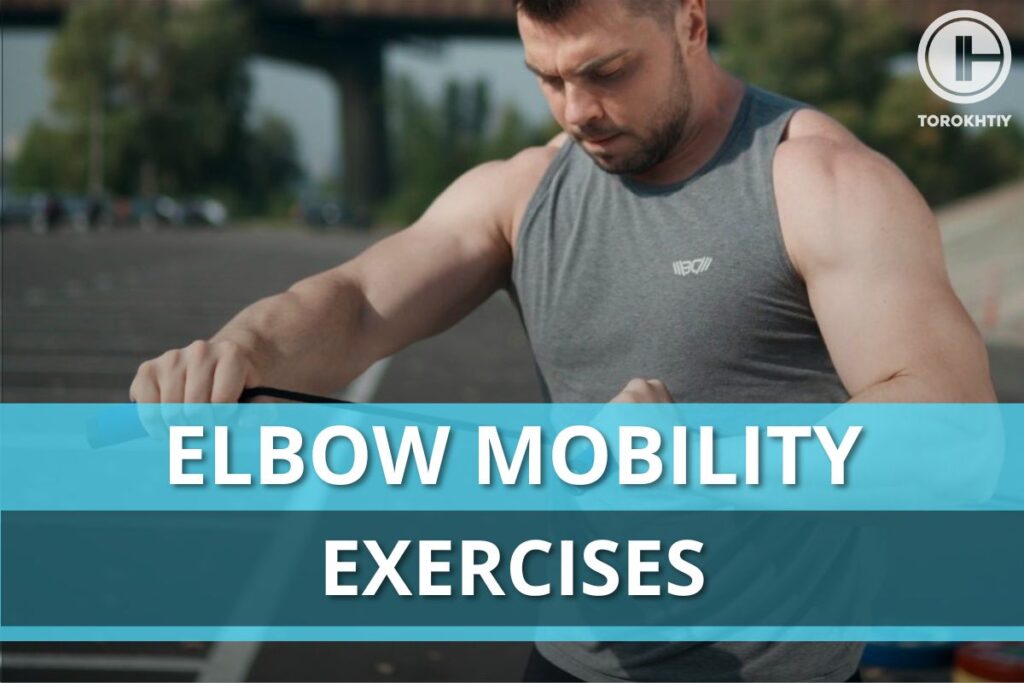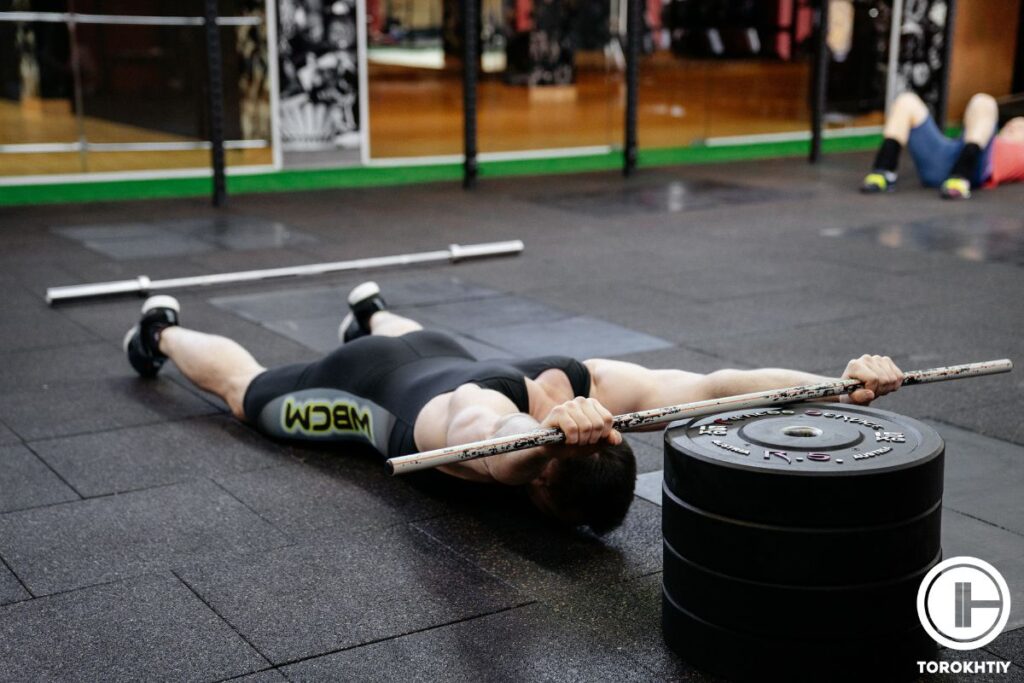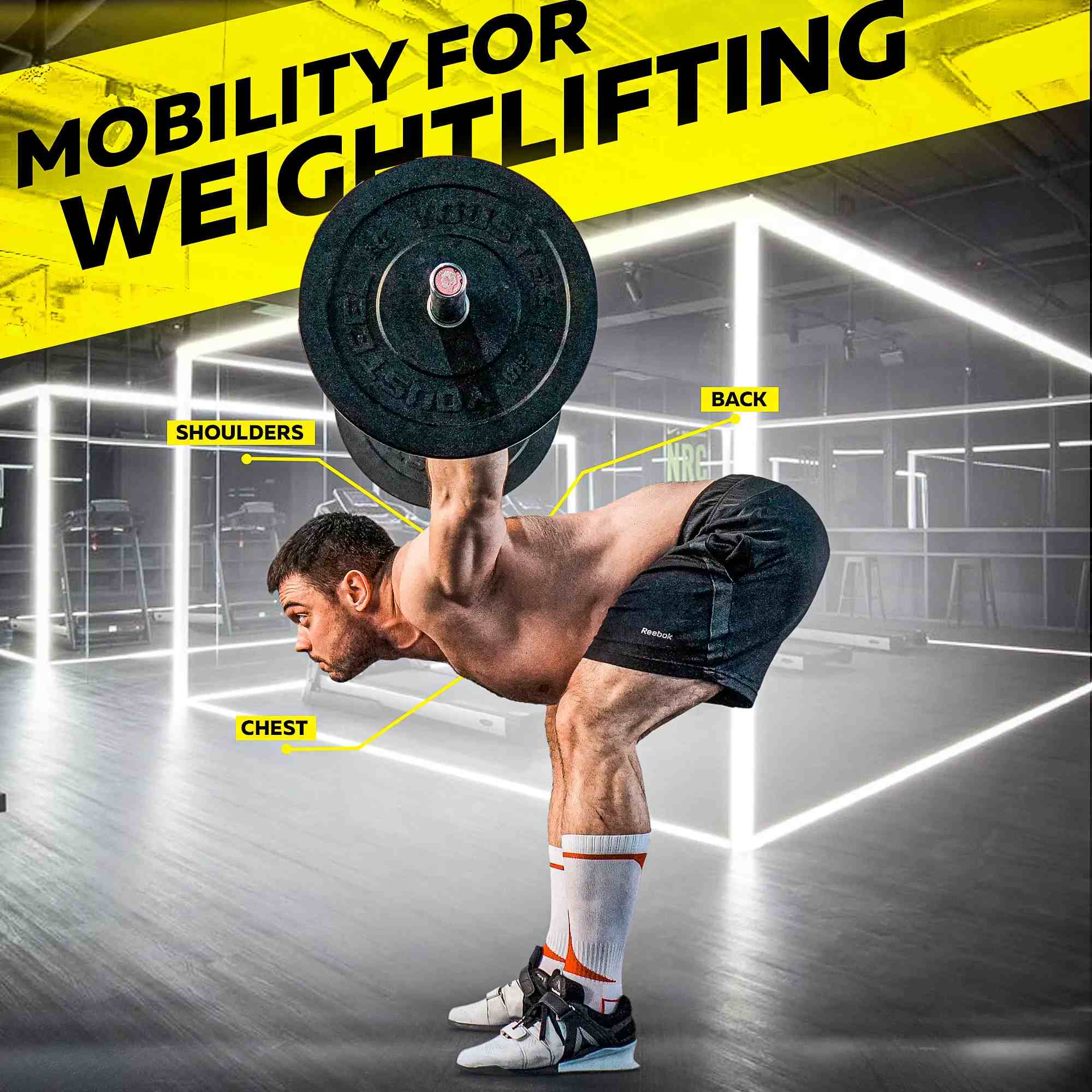What Are Elbow Mobility Exercises? Everything You Need to Know
Author:
Reviewed by:
(21 years of Oly Lifting experience)
Unlock your full potential by engaging with our experts and community! Have questions about your fitness journey or looking for expert advice on weightlifting techniques? Don’t hesitate — leave a comment below and Zinaida Bondarenko will provide a personalized answer and insights to help you reach your goals.
Torokhtiy is reader-supported. Some links are affiliate links, and we may earn a commission at no extra cost to you. See our disclosure page for details.
Are you nursing a recurring elbow injury? Try our easy-to-follow elbow agility exercises to help keep you flexible and healthy.
What Are Elbow Mobility Exercises? Elbow mobility exercises are specific movements designed to improve mobility and strength in elbow joints, as well as external and internal rotation. These exercises are crucial since they promote flexibility and reduce inflammation. Strength and stamina are also improved, and general joint health is enhanced. Including it in your routine will improve your coordination, increase your athletic performance, and reduce your risk of injury.

What Is Elbow Mobility?
Elbow mobility is the ability of your arms to bend and straighten at the elbow. It’s essential for many activities, including throwing, swinging a bat, or lifting something overhead. These activities can be difficult or painful without proper elbow mobility. If any of these actions are complex, you need to stretch and exercise to improve the mobility of your elbows, wrists, and shoulders. Regular practice gives you more control over your movements and reduces joint pain and tension.
Why Do You Need Elbow Mobility?
Having good elbow mobility is essential for several reasons. Maintaining the strength and flexibility of your joints helps lower the chance of injury. With good elbow mobility, you can perform everyday efforts with less strain on your joints. The improved motion also decreases inflammation, relieving pain from conditions such as tennis elbow or golfer’s elbow. Activities like sports, weightlifting and running depend on solid joints and muscles. With more bendable elbows, you can perform better and with less risk of harm.
Let’s review some benefits of improved elbow mobility:
Reduce Рain
One of the main reasons you may want to include elbow agility exercises in your daily routine is to reduce pain and discomfort in your elbows. Many activities, such as lifting weights or playing sports, can cause pain and tightness in the elbow joint, so performing regular mobility exercises can help to alleviate this discomfort.
Prevent Future Injuries
Another great reason to incorporate elbow movement exercises into your daily routine is to prevent future injuries. By regular elbow stretches and strengthening the muscles and ligaments around the elbow joint, you are helping to maintain flexibility and range of motion, which can help reduce the risk of injury. This is especially important if you participate in any sports or activities that require repetitive movements with your arms, as these can cause tightness and increased pain in the elbow.

Improve Overall Performance
Finally, elbow agility exercises can help improve your overall performance. Solid and flexible elbows can help you move more efficiently and with greater power, helping to improve your performance in daily activities or sports. Elbow activity exercises can also help you reach a wider variety of positions and angles with your arms, which can benefit many types of activity.
The Best Elbow Mobility Exercises
Improved Athletic Performance
Exercises to increase your elbow range of motion are often passive or active stretches. Also known as static or dynamic stretches, respectively, these isometric contractions help build strength and muscle memory specific to the joint being targeted—in this case, the elbow. You may also need strengthening exercises focusing on the surrounding musculature tissue around the elbow.
Let’s focus on simple at-home exercises without weights or expensive equipment to get you started at a beginner’s level. So what are some of the best elbow mobility exercises?
Check out our compiled list of elbow range of motion exercises:
Follow us!

Free!
Get a 2-week Weightlifting Program as a bonus for the subscription to kickstart your training plan!

Free!
Elbow Flexion Exercises
To do this exercise, stand with your arms at your sides and your elbows bent at 90 degrees. Slowly straighten and bend your elbow while keeping the rest of your body still. Do ten reps of this exercise.
Banded Distraction
This exercise involves placing a band around your elbow and stretching it to the side. Your elbow joint should feel somewhat stretched. Before letting go, maintain this posture for 30 seconds—ten times each on both arms.
Elbow Circles
This exercise involves making circles with your elbow bent at 90 degrees. Remember that your shoulder blades are back and downwards while doing this exercise. Do ten circles in each direction. All of these exercises are simple yet effective at improving elbow mobility. You may enhance your overall performance in any activity or sport by including them in your everyday life, which will assist in keeping your elbows solid and flexible.
Symptoms of Tennis Elbow
Tennis elbow, also known as lateral epicondylitis, is where the outer part of your elbow joint becomes inflamed and painful. If you’re experiencing any of these symptoms, you likely have tennis elbow:
- Pain on the outside of your elbow when gripping or lifting objects
- Weakness in your grip strength
- Pain when bending your wrist or forearm
- Pain when straightening your arm
If you find yourself experiencing any of these symptoms, taking preventative measures and performing elbow mobility exercises is essential. Doing so can help reduce discomfort and pain in the elbow joint.
Don’t forget to consult a physiotherapist for a complete examination and get the proper treatment for your condition.
FAQ
How Do You Loosen Your Elbow Muscles?
Stretching is essential for keeping your elbows flexible and mobile. Try dynamic stretches such as arm swings or light jogging before engaging in any physical activities that require elbow use – this will help warm up these muscles and reduce potential injury risk.
Use a foam roller to loosen tight elbows, as it helps release muscle tension while improving blood flow to the area.
How Do I Make My Elbow Tendons Stronger?
First, try wrist and hand exercises such as making a fist, spreading your fingers apart and back together, or doing finger curls. They will support the tendons in your elbow joint by strengthening the muscles in your wrists and hands.
You can strengthen the muscles adjacent to your elbow for more targeted exercises by incorporating tricep exercises into your workouts. Try triceps dips using a chair or bench or single-arm triceps extensions using dumbbells.
Conclusion
Athlete mobility is essential for general health and performance. It alludes to an athlete’s ability to move their joints through their entire range of motion. Improving athlete mobility can result in a variety of advantages, including better efficiency, injury prevention, and decreased muscle soreness. Stretching, mobility drills, and yoga poses are important for targeting key areas of the body, such as the hips, hamstrings, shoulders, ankles, and lower back. However, it is critical to avoid overtraining and to allow the body to rest and recuperate between mobility training sessions. Athletes can improve their mobility, improve their performance, and reduce their risk of injury by incorporating mobility training into a well-rounded fitness routine and tailoring it to individual requirements and objectives.
Let us know if you agree with us on this topic or share your thoughts on the importance of athlete mobility by using the comments section below!
Also read:
- Lifting Overhead
- Elbow Mobility Exercises
- Stretching for Weightlifting
- Lower Back Mobility Exercises
- Thoracic Mobility Exercises
- Lat Stretches
References:
- What is dynamic stretching and how to do it // Medical News Today: https://www.medicalnewstoday.com/articles/dynamic-stretching
- The 8 Most Effective Triceps Exercises // VeryWellFit: https://www.verywellfit.com/most-effective-triceps-exercises-1231027
- Normative values and affecting factors for the elbow range of motion // NCBI: https://www.ncbi.nlm.nih.gov/pmc/articles/PMC6555111
- Tennis Elbow (Lateral Epicondylitis) // WebMD: https://www.webmd.com/fitness-exercise/tennis-elbow-lateral-epicondylitis
- The importance of stretching // Health Harvard Publishing: https://www.health.harvard.edu/staying-healthy/the-importance-of-stretching
Why Trust Us?
With over 20 years in Olympic weightlifting, strength training, nutrition coaching, and general fitness our team does its best to provide the audience with ultimate support and meet the needs and requirements of advanced athletes and professional lifters, as well as people who strive to open new opportunities and develop their physical capabilities with us.
By trusting the recommendations of our certified experts in coaching, nutrition, and sports training programming, as well as scientific consultants, and physiotherapists, we provide you with thorough, well-considered, and scientifically proven content. All the information given in the articles concerning workout programming, separate exercises, and athletic performance, in general, is based on verified data.
The product testing process is described in more detail here.
Author: Zinaida Bondarenko
Coach, Physiotherapist
Physical rehabilitation experience: 10 years
Zinaida was a member of the national team of Ukraine in rhythmic gymnastics, accumulating 15 years of professional sports experience. She holds certifications in functional training, rehabilitation, kinesiotherapy, specializing in working with athletes across various domains: recovery, rehabilitation, functional and mobility training, General Physical Preparedness (GPP), as well as injury prevention through specific program design. Moreover, she focuses on athlete and coach education to enhance performance and prevent injuries.
Reviewed by: Oleksiy Torokhtiy
Olympic Weightlifting Champion, PhD in Sport Science
Best Results: Snatch – 200 kg,
C&J – 240 kg
Oleksiy Torokhtiy is a professional athlete boasting 20 years of experience in Olympic weightlifting. With multiple European and World titles under his belt, he has showcased his prowess in two Olympic Games (Beijing 2008 and London 2012). Upon concluding his illustrious career, Oleksiy dedicated himself to coaching. By 2022, he had conducted over 200 weightlifting seminars worldwide. He is the visionary behind an international sportswear and accessories brand known for its motto, “Warm Body Cold Mind.” Additionally, he is an esteemed author and the creator of a series of training programs and eBooks.





Still have questions after reading our article? Unlock your full potential by engaging with our experts and community! Don’t hesitate — leave a comment below and Zinaida Bondarenko will provide a personalized answer and insights to help you reach your goals.